Bulbs
Flower Basics
Flower Beds & Specialty Gardens
Flower Garden
Garden Furniture
Garden Gnomes
Garden Seeds
Garden Sheds
Garden Statues
Garden Tools & Supplies
Gardening Basics
Green & Organic
Groundcovers & Vines
Growing Annuals
Growing Basil
Growing Beans
Growing Berries
Growing Blueberries
Growing Cactus
Growing Corn
Growing Cotton
Growing Edibles
Growing Flowers
Growing Garlic
Growing Grapes
Growing Grass
Growing Herbs
Growing Jasmine
Growing Mint
Growing Mushrooms
Orchids
Growing Peanuts
Growing Perennials
Growing Plants
Growing Rosemary
Growing Roses
Growing Strawberries
Growing Sunflowers
Growing Thyme
Growing Tomatoes
Growing Tulips
Growing Vegetables
Herb Basics
Herb Garden
Indoor Growing
Landscaping Basics
Landscaping Patios
Landscaping Plants
Landscaping Shrubs
Landscaping Trees
Landscaping Walks & Pathways
Lawn Basics
Lawn Maintenance
Lawn Mowers
Lawn Ornaments
Lawn Planting
Lawn Tools
Outdoor Growing
Overall Landscape Planning
Pests, Weeds & Problems
Plant Basics
Rock Garden
Rose Garden
Shrubs
Soil
Specialty Gardens
Trees
Vegetable Garden
Yard Maintenance
How to Make Organic Pesticides From Ingredients in Your Kitchen
If you want to eliminate or reduce the amount of toxic pesticides at your table, start with how you garden.
If you're not comfortable with using chemical pesticides, you can instead try time-honored and organic products for your garden. Turn to ordinary items in your kitchen pantry or refrigerator to make organic pesticides to solve a number of gardening problems.
Food for Thought

Kitchen Staples
It may look like a grocery list, but it includes the familiar raw materials you will be working with in your kitchen "lab." You donít necessary need all of these things -- it depends on the type of pest thatís bugging you.
If you wish to avoid all traces of agricultural chemicals or synthetics in your homemade garden products, use organic ingredients. Look for products that carry the "USDA Certified Organic" seal, which is issued by the U.S. Department of Agriculture.
Milk
Eggs
Beef bouillon cubes
Baking soda
Apple cider vinegar
Vegetable oil
Coffee grounds
Natural liquid soap
Tip
Use a plant-based soap, like castille soap. Most ordinary liquid dish soaps are detergents, which often contain harsh chemicals that can burn plants, especially if they're in the sun.
Dos and Doníts
Before you start spraying or dusting anything, take a few commonsense precautions.
Do:
Check plants to see what kind of critter tenants you have. If you find what you think is a pest but arenít sure, use an online pest library at Texas A&M University or the National Gardening Association help you make a positive identification.
Protect your skin, eyes and lungs. Organic pesticides may be nontoxic, but some formulas can still irritate sensitive membranes. So, wear a breathing mask, gloves and protective eye wear when applying them.
Perform a patch test on a single leaf of a plant first. If there is no adverse reaction to the plant within 24, proceed. If there is, repeat this test on another leaf with a different formula.
Apply liquid organic pesticides in the morning or early evening when itís cooler. Otherwise, plants may suffer burns under the hot afternoon sun.
Target only the areas that need attention and avoid spraying "friendly" bugs. The last thing you want to do is to harm or evict spiders or other beneficial predatory insects that are your allies when it comes to pest management.
Do Not:
Do not apply a liquid organic pesticide to plants when the outdoor temperature is above 80 degrees Fahrenheit.
Do not think spraying more equates to more effective -- itís not.
Do not leave prepared pesticide solutions where small children or pets can access them.
Ready, Set, Mix
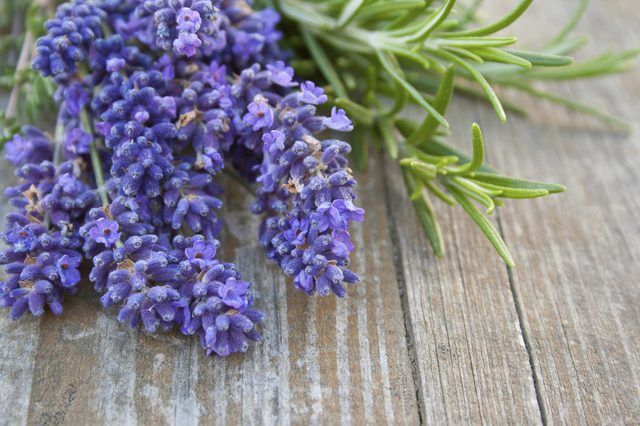
Garden Tea Spray
Herbs, like other plants, contain phytochemicals that protect them from hungry predators in nature, as well as constituents with antifungal and antibacterial properties. Used in your garden, these agents may help to counter disease and either repel insects or lead to their demise.
An infusion made by steeping 1 gallon of boiling water and 1 packed cup of fresh herbs in a Dutch oven will produce a large batch of garden tea spray. Once it's cool, transfer the "tea" into 16- or 22-ounce spray bottles and add 1 teaspoon of liquid soap. Shake gently and itís ready to use.
Choose your herb according to your pest:
Fungal diseases:
Chamomile flower (Chamaemelum nobile, which grows as a perennial in U.S. Department of Agriculture plant hardiness zones 4 through 9) Annual basil leaf (Ocimum basilicum)
Thyme leaf (Thymus vulgaris, USDA zones 5 through 8)
Peppermint leaf (Mentha ? piperita, USDA zones 5 through 9)
Potato scab:
Comfrey leaf (Symphytum officinale, USDA zones 4 through 8)
Aphids, mites and other insects:
Rosemary leaf (Rosmarinus officinalis, USDA zones 8 through 10)
Lavender buds (Lavandula angustifolia, USDA zones 5 through 8)
Sage leaf (Salvia officinalis, USDA zones 4 through 8)†
Wormwood leaf (Artemisia absinthium, USDA zones 4 through 9)†
Tip
If you do not have an herb garden, or do not have access to fresh herbs from a farmer's market or other source, note that, with the exception of chamomile, lavender and wormwood, most of these herbs can easily be grown in small pots near a kitchen window. Peppermint can also be grown indoors, but needs frequent pinching back to keep it small and tidy.
Rotten Egg Deer Barrier Spray
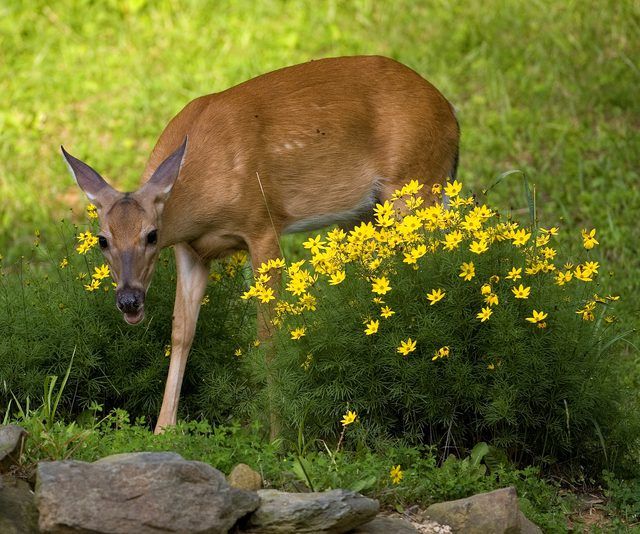
There's no delicate way around it -- this formula stinks. Deer aren't bothered as much by the sulfurous smell as they are the scent of animal protein, which encourages them to stride past your edibles and onto greener pastures.
To make it, place four beef bouillon cubes and six raw eggs in the bottom of a 1-gallon bucket. Fill the bucket with water, cover and let it sit for a week or until the full rotten egg aroma develops. This is clearly best done outside or in a garage. Transfer the solution into 16-ounce spray bottles and add 1/2 teaspoon of liquid soap to each one.
To use, spray around garden plants to create a barrier and not directly on vegetables or herbs you plan to eat. Reapply weekly and after a heavy rain.
Bye-Bye Rabbit Dust
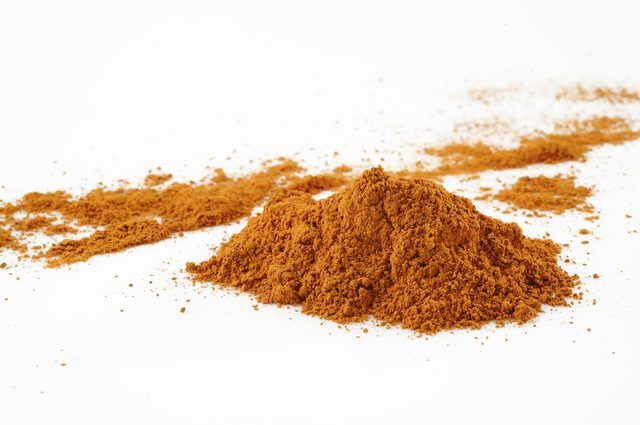
Rabbits are fun to watch when theyíre eating the clover from your lawn, but the cuteness factor fades when you catch them munching on your vegetables. To deter these rascals, sprinkle 1 to 2 tablespoons of powdered cinnamon around each plant. Bonus: This may also work for squirrels and cats. Apply every five to seven days and after it rains.
Mildew-Be-Gone Milk Spray

The acidic enzymes in milk change the pH of plant leaves, which helps to prevent mildew diseases.
To make it, combine 1 ounce of whole milk with 9 ounces of water in a spray bottle that can hold 12 or more ounces.
To apply, shake gently and thoroughly spray affected plants at the first sign of disease. Reapply every three days until symptoms improve, then weekly as a preventative.
Tip
Thoroughly rinse the spray bottle with hot, soapy water after each use. Do not leave the solution in the bottle between uses -- make fresh each time.
Baking Soda Anti-Fungal Spray
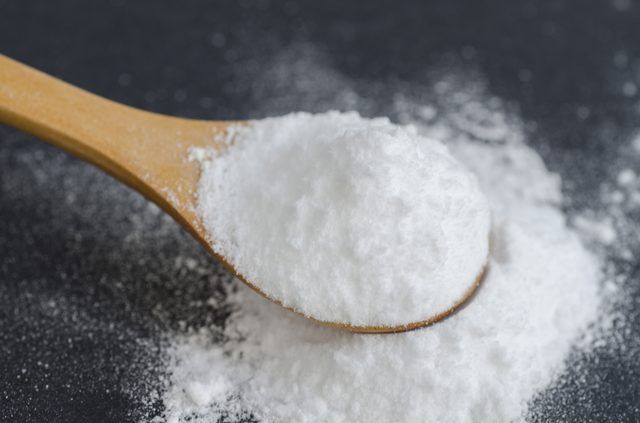
Use a baking soda formula to treat and prevent leaf spot, powdery mildew and other fungal diseases.
To make it, mix 2 1/2 tablespoons of vegetable oil and one tablespoon of baking soda into a gallon of water. Add 1/2 teaspoon of liquid soap.
To use, spray each leaf of any plant that shows signs of fungal disease, as well as those of neighboring plants, even if they don't appear to be affected. Reapply weekly and after it rains.
Out Black Spot
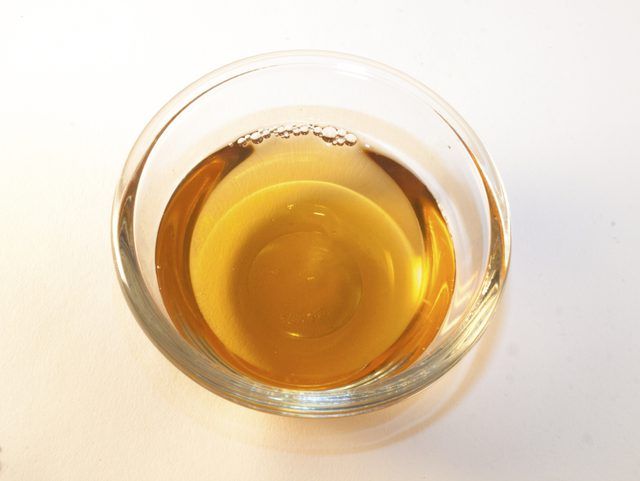
Apple cider vinegar is a natural fungicide and works against diseases like black spot, leaf spot and mildew that affect garden plants and flowering shrubs.
To make it, add 3 tablespoons of apple cider vinegar to a 1-gallon bucket of water, then shake or stir to mix. Transfer the mixture into a spray bottle.
To use, spray on affected plants each morning for three or four days, then reapply weekly.
For more information on making organic pesticides, see "How to Make Garlic Pesticide," and "How to Make Organic Pepper Spray for Plants."